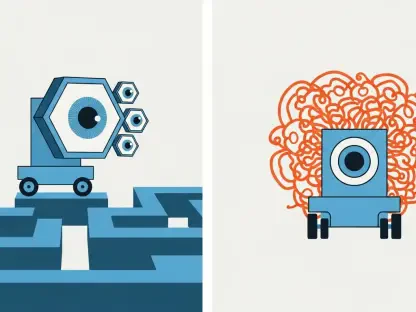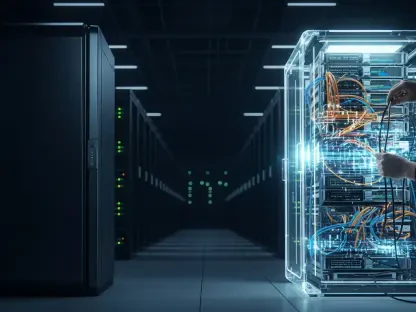OpenAI’s recent announcement to release its first “open-weight” language model since 2019 signifies a major strategic shift for the AI industry giant. This shift from proprietary AI systems to open-source methodologies marks a potential turning point in AI development. Previously relying on a cloud-based subscription model, OpenAI’s move towards open-source opens new avenues for developers to run the new model on their own hardware. Such a strategic pivot signifies recognition of the growing commoditization of foundation models in the AI landscape. This transition has generated considerable discussion and speculation about the future trajectory of the AI sector.
The Historical Context of OpenAI
OpenAI, originally founded in 2015 as a non-profit organization, was dedicated to advancing artificial general intelligence for broad human benefit. Initially, the organization embraced openness, sharing early models and research. OpenAI’s mission was to ensure AI’s benefits would be widely distributed, aiming to prevent a single entity from monopolizing this transformative technology. However, the establishment of OpenAI LP in 2019 marked a pivot towards commercialization and a closed, proprietary approach. Models like GPT-3 and GPT-4 were restricted, signaling a departure from the company’s original ethos, which emphasized transparency and accessible innovation.
The creation of OpenAI LP was seen as a necessary step to secure funding and development resources, allowing the company to drive significant advancements in AI. This commercialization enabled the development of some of the most advanced language models in the industry. Despite these gains, OpenAI faced criticism for moving away from the collaborative spirit that once defined its early days. This shift highlighted an inherent tension between the pursuit of cutting-edge technology and the foundational principle of broad access. As OpenAI leaned towards closed systems, competitors like Meta began embracing openness, challenging OpenAI’s proprietary approach and raising questions about future industry dynamics.
Economic Pressures and Market Dynamics
OpenAI’s recent announcement comes at a time when the company faces increasing financial pressures. The organization spends approximately $7-8 billion annually on operations, a figure questioned for its sustainability, especially when compared to more cost-efficient open-source models. The exorbitant operational costs are largely due to the extensive infrastructure required to support proprietary large-scale language models. Competitors have demonstrated more efficient financial models that rely on open-source solutions, making them attractive alternatives in cost-sensitive environments. Such models have proven that comparable performance can be achieved at significantly lower running expenses, contributing to mounting economic strain on OpenAI.
The recent $40 billion funding round at a $300 billion valuation underscores both the potential and the market pressure facing OpenAI. While this substantial financial injection reflects confidence in OpenAI’s capabilities, it also highlights the fierce competition and the expectation to maintain a leading position in a rapidly evolving AI landscape. The company’s ability to innovate amidst economic constraints becomes crucial, as sustaining competitive advantage requires strategic adaptation. Maintaining attention on profitability and operational efficiency has become imperative, as the industry dynamics push for more sustainable AI development practices, echoing broader economic trends.
The Impact of Competitors
A pivotal moment in OpenAI’s strategic reevaluation came when China released DeepSeek R1, an open-source model matching OpenAI’s performance at a fraction of the cost. This development struck a significant chord within the industry, declaring that high-performance AI models could be developed without the enormous infrastructure investments traditionally seen as indispensable. The emergence of DeepSeek R1 prompted CEO Sam Altman to acknowledge OpenAI’s mistake regarding open-source AI. The realization that proprietary models were not necessarily the optimal route unveiled a strategic blind spot and underscored the need to reevaluate previous assumptions.
Additionally, Meta’s success with its Llama models, which surpassed one billion downloads, highlighted the growing market preference for open-source models. These developments suggested a need for OpenAI to reconsider its approach fundamentally. As open-source models gain traction, their ability to facilitate widespread innovation becomes increasingly desirable. Such developments in the competitor landscape signal shifting preferences and broader adoption of open-source methodologies. OpenAI’s reevaluation is a bid to align with these evolving market trends, which prioritize accessibility, adaptability, and cost-effectiveness over exclusive technological dominance.
Reactions from Industry Leaders
The response within the AI community has been largely positive. Clement Delangue, CEO of Hugging Face, celebrated the decision, emphasizing the collective benefits of open-source AI. This endorsement from industry leaders reflects optimism about the collaborative potential unlocked by OpenAI’s shift. Open-source models foster a rich ecosystem where shared knowledge and expertise contribute to collective advancement, enhancing innovation across the field. The positive reception indicates a belief that the move will spur advancements in AI development by widening the scope for collaboration and experimentation.
Such endorsements suggest that OpenAI’s shift is viewed as a progressive step, reinforcing a collaborative spirit in AI development. Industry leaders contend that embracing openness can address pressing challenges and catalyze breakthroughs by leveraging diverse insights and reducing redundant efforts. The support from notable figures within the AI community underscores a shared conviction that the open-source approach constitutes a beneficial strategic alignment. The broader acceptance among experts reaffirms the potential for mutual growth and evolution, signaling a favorable outlook for the future integration of open-source methodologies in AI development.
Safety and Responsible Use
Despite the embrace of openness, OpenAI remains committed to safety. Altman emphasized that the new model would undergo thorough evaluation according to OpenAI’s preparedness framework, maintaining stringent standards to ensure responsible deployment. Safety concerns are paramount, especially with models that can be modified post-release. This environment necessitates robust frameworks to monitor, assess, and mitigate risks associated with unintended usage or harmful applications. OpenAI’s commitment to safety reflects an understanding of the critical importance of safeguarding against potential abuses, balancing innovation with prudent oversight.
Additional efforts are being made to manage post-release modifications, highlighting the challenges of maintaining safety with open-weight releases. Tensions arise from the balance between fostering open experimentation and controlling the misuse of powerful technologies. OpenAI plans to host developer events to gather feedback and showcase early prototypes, reflecting proactive engagement with the community. These sessions aim to provide insights into how OpenAI plans to maintain safety while promoting openness. By involving developers in rigorous scrutiny and iterative improvements, OpenAI endeavors to uphold a standard of responsibility that aligns with its mission and stakeholder expectations.
Opportunities for Enterprise Customers
For enterprise customers, this shift presents significant opportunities. Self-hosted models address concerns about data sovereignty, vendor lock-in, and long-term costs, particularly in regulated industries such as healthcare, finance, and government. These sectors often grapple with stringent data privacy requirements and operational constraints that limit the adoption of cloud-based AI solutions. The ability to run models in-house mitigates these issues, providing greater control over data handling and reducing dependencies on external vendors. This flexibility is particularly valuable in environments where compliance and security are non-negotiable.
However, questions remain about compute requirements and operational complexity, which need to be addressed for these sectors to fully benefit. Efficiently deploying self-hosted models demands substantial computing power and technical expertise, potentially posing significant barriers to entry. Addressing these challenges involves developing streamlined infrastructure solutions and support mechanisms that facilitate seamless integration. OpenAI acknowledges these hurdles, reflecting an ongoing commitment to refining deployment strategies that make advanced AI accessible without compromising functionality or security in enterprise applications.
Strategic Implications and Industry Trends
OpenAI’s pivot reflects a broader industry trend towards specialized applications as foundation models become commoditized. Differentiation now increasingly occurs at the application layer, where fine-tuned, domain-specific solutions provide competitive edges. As generalized models become more accessible, the strategic focus shifts towards leveraging these foundations to build tailored applications that address specific user needs. This approach allows companies to innovate further by integrating domain expertise and optimizing models for particular use cases, enhancing relevance and performance.
This move may also pressure competitors like Anthropic and Google’s Gemini team to reassess their strategies, potentially accelerating an industry-wide shift towards open-source models. As OpenAI pioneers this transition, it sets a precedent that could influence broader market dynamics. Competitors must navigate changing expectations and consider the advantages of embracing openness. This reevaluation of proprietary approaches could stimulate an ecosystem where collaborative innovation thrives, encouraging diverse contributions and fostering robust advancements across the AI sector.
Returning to Foundational Principles
In an ironic twist, OpenAI’s return to openness may align more closely with its original mission. The shift acknowledges the commoditization of foundation models and embraces the collaborative strength of the AI community. This strategic pivot demonstrates a realization that influence and relevance in the AI ecosystem may exceed the value of short-term subscription revenue. OpenAI’s anticipation of developers building diverse applications reflects a renewed commitment to fostering innovation through collaboration. The strategic move to open-source may well represent a return to foundational principles, driven by evolving economic realities and competitive pressures.
Future Prospects and Market Evolution
OpenAI’s recent announcement to release its first “open-weight” language model since 2019 signifies a major strategic shift for the AI industry giant. This transition from proprietary AI systems to open-source methodologies marks a potential turning point in AI development. By moving towards open-source, OpenAI encourages developers to run the new model on their own hardware, departing from its previous cloud-based subscription model. This strategic pivot signifies OpenAI’s recognition of the growing commoditization of foundation models in the AI landscape. The company’s decision to make its models openly accessible not only offers greater flexibility for developers but also democratizes the technology, potentially spurring innovation and collaboration within the field. As a result, this transition has generated considerable discussion and speculation about the future trajectory of the AI sector. Such an evolution in handling language models could redefine the competitive landscape and the role of open-source in driving AI advancements.









